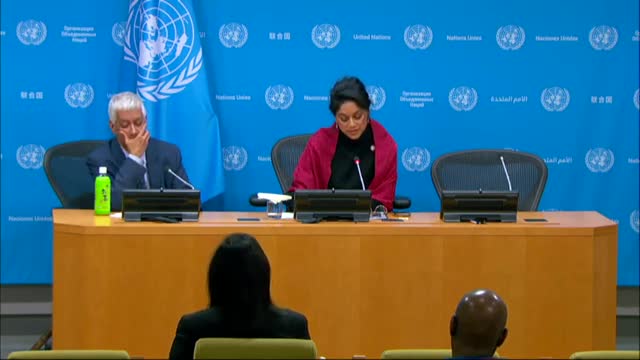HIV infections rise in Latin America amid funding concerns
November 27, 2024 | United Nations, Federal
This article was created by AI summarizing key points discussed. AI makes mistakes, so for full details and context, please refer to the video of the full meeting. Please report any errors so we can fix them. Report an error »

During a recent government meeting, discussions centered on the global response to HIV, highlighting the critical role of funding and the challenges faced in various regions, particularly Latin America.
A key point raised was the dependency on donations from the United States, especially through initiatives like the President's Emergency Plan for AIDS Relief (PEPFAR) and contributions to the Global Fund. It was noted that nearly 60% of funding for the HIV response comes from countries themselves, underscoring a collective commitment to combat the epidemic. Despite potential changes in U.S. administration, historical bipartisan support for HIV initiatives was emphasized, with hopes that this trend continues to ensure sustained financial and political backing.
The conversation also addressed the situation in Latin America, where new HIV infections are reportedly on the rise, particularly among key populations such as men who have sex with men and LGBTQI+ individuals. The increase in infections is attributed to ongoing human rights barriers, stigma, and discrimination prevalent in many countries within the region. While progress has been made in other areas, such as Africa, Latin America and the Caribbean, along with parts of Eastern Europe and the Asia-Pacific, require additional support to effectively reduce new infections and close treatment gaps.
Overall, the meeting underscored the need for continued global collaboration and commitment to end AIDS as a public health threat, with a particular focus on addressing the unique challenges faced by vulnerable populations in various regions.
A key point raised was the dependency on donations from the United States, especially through initiatives like the President's Emergency Plan for AIDS Relief (PEPFAR) and contributions to the Global Fund. It was noted that nearly 60% of funding for the HIV response comes from countries themselves, underscoring a collective commitment to combat the epidemic. Despite potential changes in U.S. administration, historical bipartisan support for HIV initiatives was emphasized, with hopes that this trend continues to ensure sustained financial and political backing.
The conversation also addressed the situation in Latin America, where new HIV infections are reportedly on the rise, particularly among key populations such as men who have sex with men and LGBTQI+ individuals. The increase in infections is attributed to ongoing human rights barriers, stigma, and discrimination prevalent in many countries within the region. While progress has been made in other areas, such as Africa, Latin America and the Caribbean, along with parts of Eastern Europe and the Asia-Pacific, require additional support to effectively reduce new infections and close treatment gaps.
Overall, the meeting underscored the need for continued global collaboration and commitment to end AIDS as a public health threat, with a particular focus on addressing the unique challenges faced by vulnerable populations in various regions.
View full meeting
This article is based on a recent meeting—watch the full video and explore the complete transcript for deeper insights into the discussion.
View full meeting